Selling Products to Retailers: How to Craft a Killer Trade Story
Guide
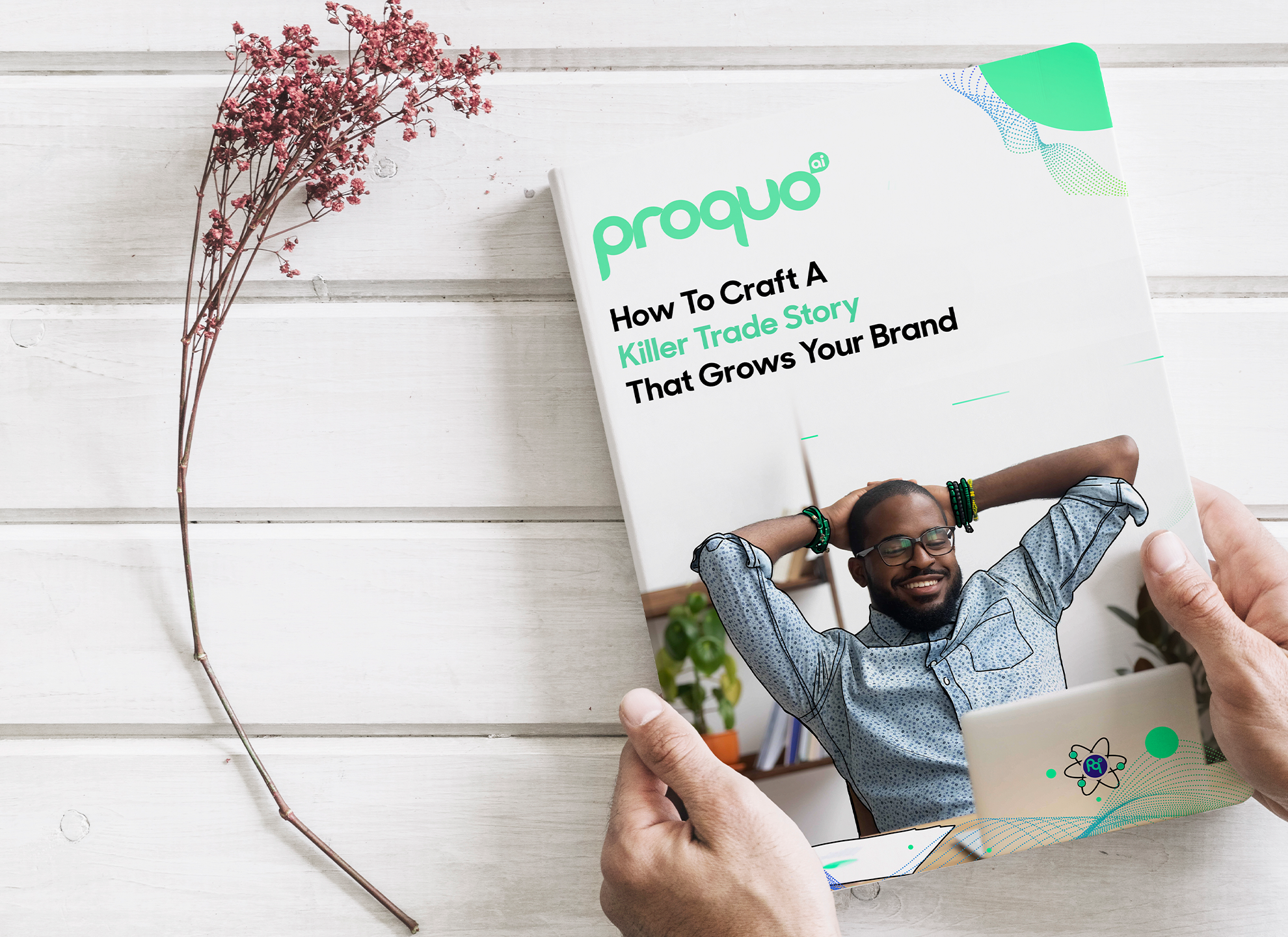
Creating a brand is one thing, but proving it has value and winning over retailers is another. What’s the best way to market your product to retailers? You'll need an outstanding trade story.
When it comes to selling in-store, a buyer’s shelf space is most often fixed, with a limited number of SKUs, or product lines, that can fit on each shelf. This in mind, brand owners need to build a compelling argument to ensure their products occupy as much of that space as is available.
Ensuring your brand understands this and pursues a piece of that shelf space is paramount to growing your brand. After all, you might have the best brand and the best products in the world, but if shoppers can’t get a hold of them, then what’s the point?
That’s where a convincing trade story comes in. Within this guide, we’ll serve up some top tips for building a trade story, so you can ensure the next time you present to a buyer, you can do it confidently with the assurance that you’re going to sell in.
For every trade story that you create, you’ll need to rely on your own brand data. We’ve gone through each of these helpful tips and will use examples with data sourced from our own ProQuo AI platform, which tracks people’s feelings and thoughts about brands in real time. Each visual provides a helpful cue as to how you can leverage your own data to match each trade story requirement.
A common faux pas when building a trade story is to dive right into telling a buyer how great your brand is. Before you get there, it’s essential that you gain their trust.
First, look at your brand from their side.
A buyer’s main goal is to maximize the value they’re able to get out of their category. Category value is one of the main performance metrics year-on-year for a buyer, so any story you tell must be shaped with category value in mind.
You do this by starting wide, flexing your expertise within the category, and you’ll want to prepare for several questions. Let’s take a look.

With data in hand, start telling the buyer about what’s driving your category: What is it that people feel they need most from your brand?
Your trade story should start by explaining what customers are driven by most, ranked in order of importance. It’s key that each brand effectively meets their most important category drivers first, as these are essentially the hygiene drivers that make a brand effective at competing in the first place.
In the example below, we’ve used our own ProQuo AI 16 Drivers, which categorize people’s feelings towards brands. Our platform sorts out the top Drivers in green all the way down to the least important Drivers in red. We can see the top four drivers for this brand’s category are Attraction, Innovation, Consistency, and Accessibility. This brand will need to demonstrate their abilities to perform on these four drivers first before they’re fit to compete!
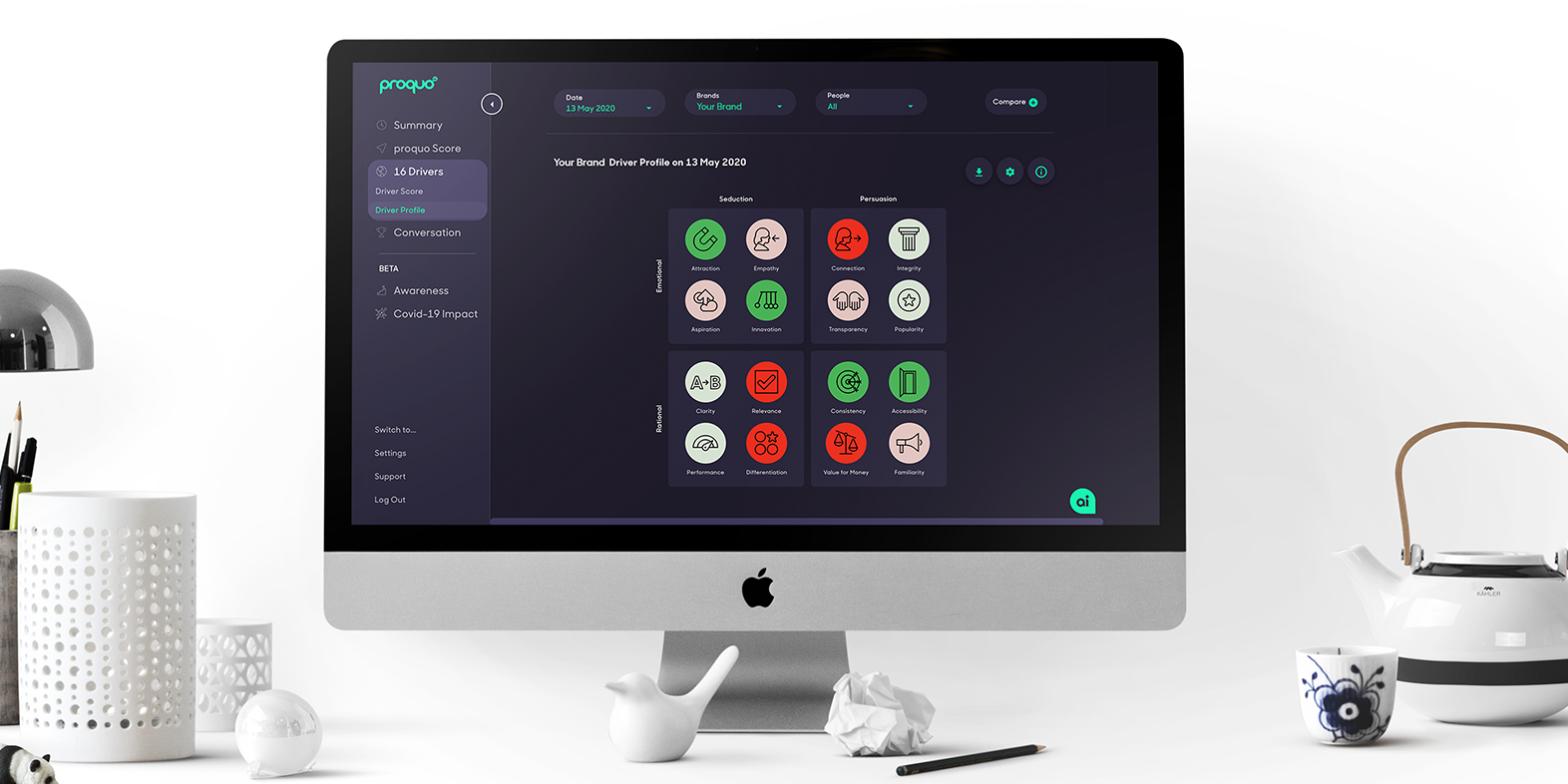
The core needs of a consumer within a category may indeed change as time passes. So, it’s important to show not only what the category needs are today, but also how those category needs evolve. What’s improving? What’s declining? What changes over time?
Often, trade stories are presented months in advance, so being able to show which category drivers are moving and shaking when you meet with the buyer can expand your trade story, drawing attention towards ones rising in importance and detracting attention from others in decline. For example, Integrity in the Foods category was not a key driver for consumers 5-10 years ago but now the provenance and responsibility of supply chain have become hygiene factors.
See another ProQuo AI example below. Here, we can see some obvious change over the course of a year. While Performance, Accessibility and Familiarity remained strong, Consistency has displaced Popularity. Attraction, Empathy, Value for Money and Connection have also declined in importance in favor of Integrity, Transparency, Clarity, and Relevance.
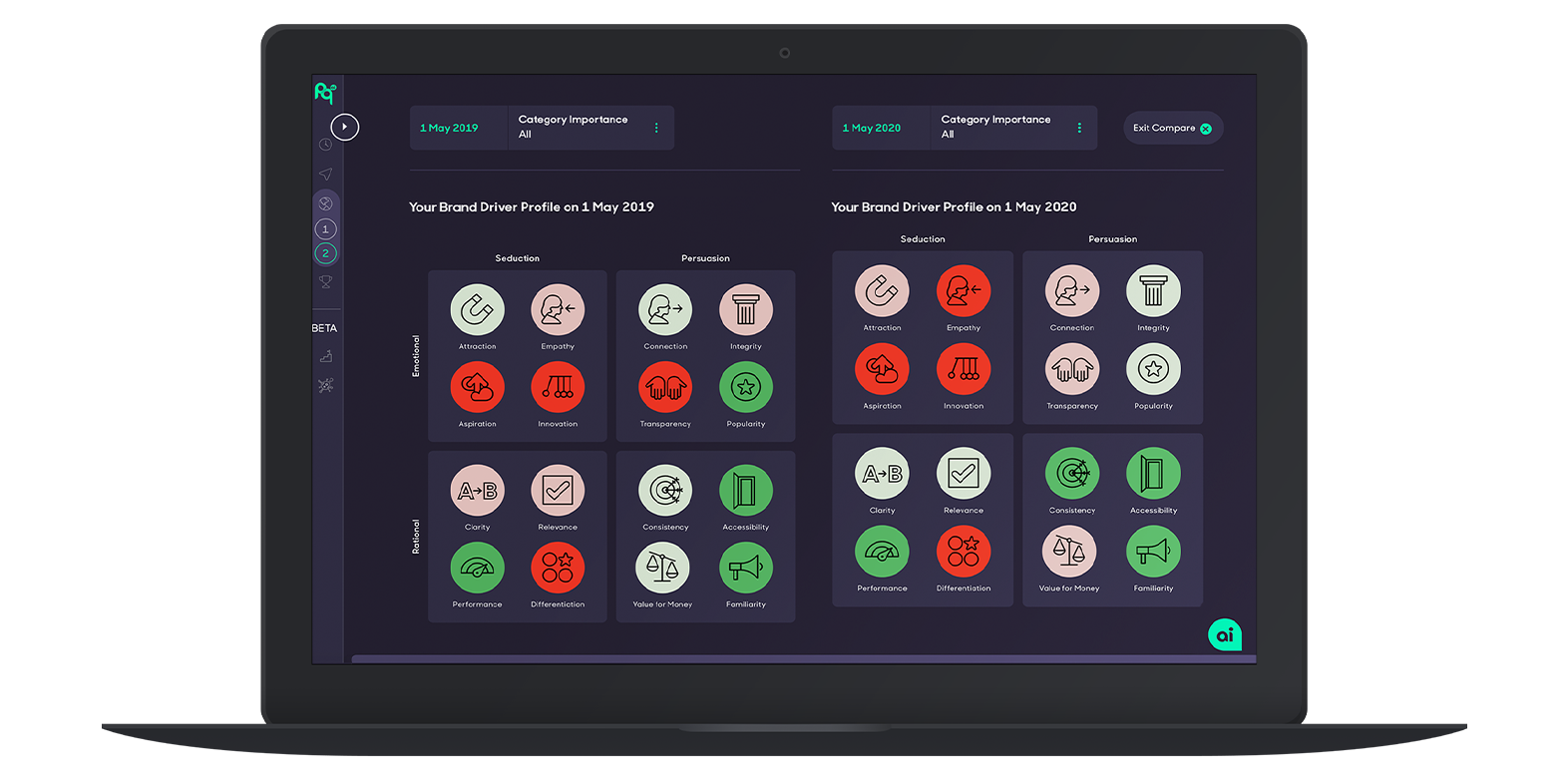
Could your story lean into any of those growing drivers to show the buyer you are an authority and key partner in this category?
Not all consumers are the same, and it’s important to recognize that different people will need different things. Making sure that you split your data up across segments is key in building a trade story that shows you will get value from different groups of consumers. So why not explore how category needs differ between men and women? Or between younger and older consumers?
Being able to slice and dice your data by subsegment is crucial for showing you understand where the value is in the category, especially for brands that have a buyer profile skewed one way or another towards gender or age.
In another example below, the main Drivers of this category are different for Women and Men. While they both need Accessibility and Performance, it’s women who value Consistency and Familiarity more than Men. And Men, on the other hand value Popularity and Value for Money more than Women.
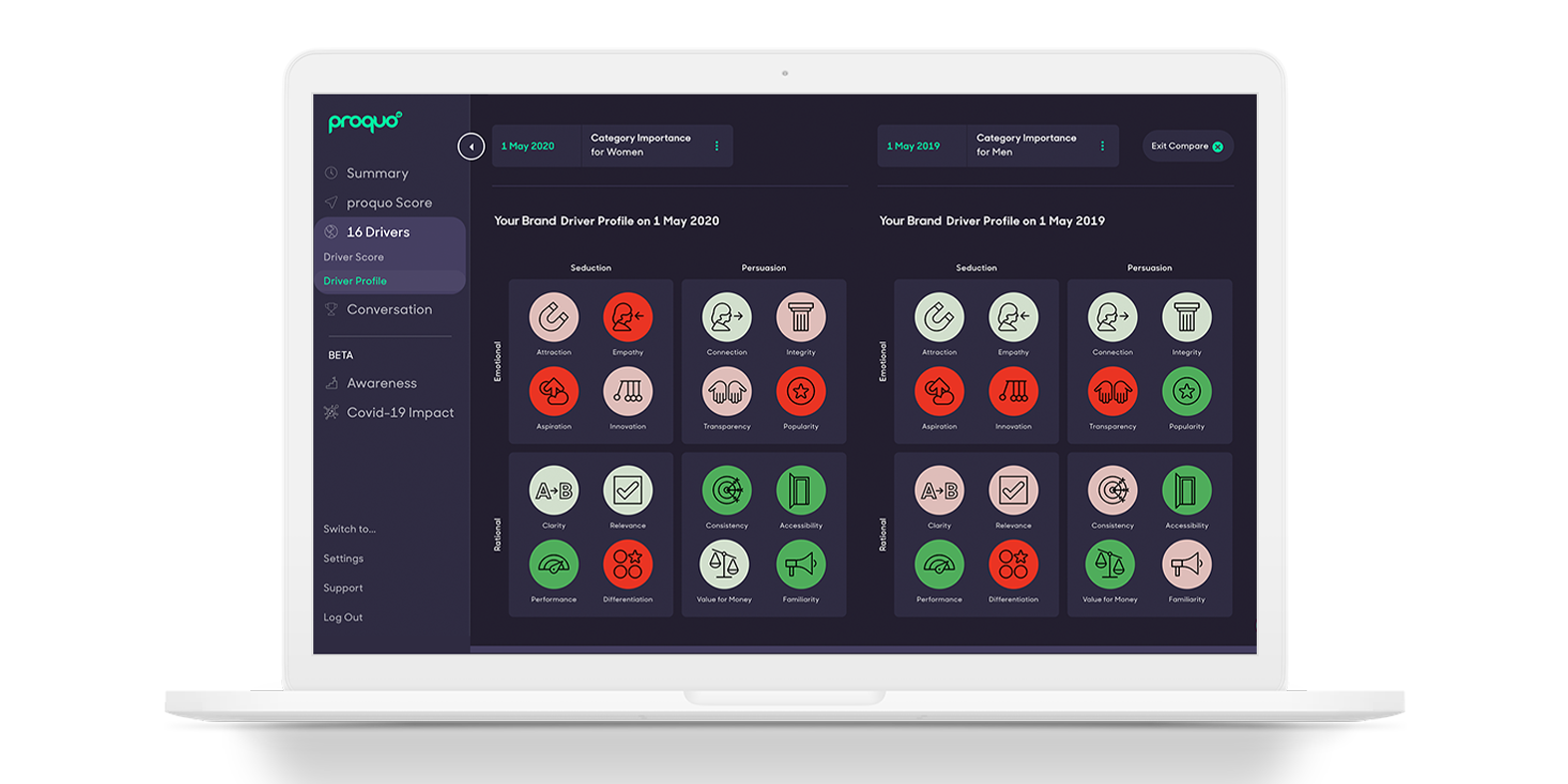
Before we dive in, a small but important point: When building a trade story, refer to people as “shoppers.” That’s how they’re referred to internally in the buyer’s world so aim to always speak in their language.
So, you’ve set up what people need at a category level, how that’s all changed over time, and the variability in those needs across different sub-segments. Now is your chance to show how your brand performs amongst your competitors in meeting shoppers’ needs.
The best way to do this is, of course, with data. Placing competitor brands head to head allows you to immediately see which brand is better able to meet the most important needs of the shopping within the buyer’s category.
We’ve done this in the example below by looking at each competitor brand within your category and their individual 16 Driver score performance. In this example, you’ll see that amongst the National population, Fred’s Foods is performing well, as they have high scores within their category’s top drivers.
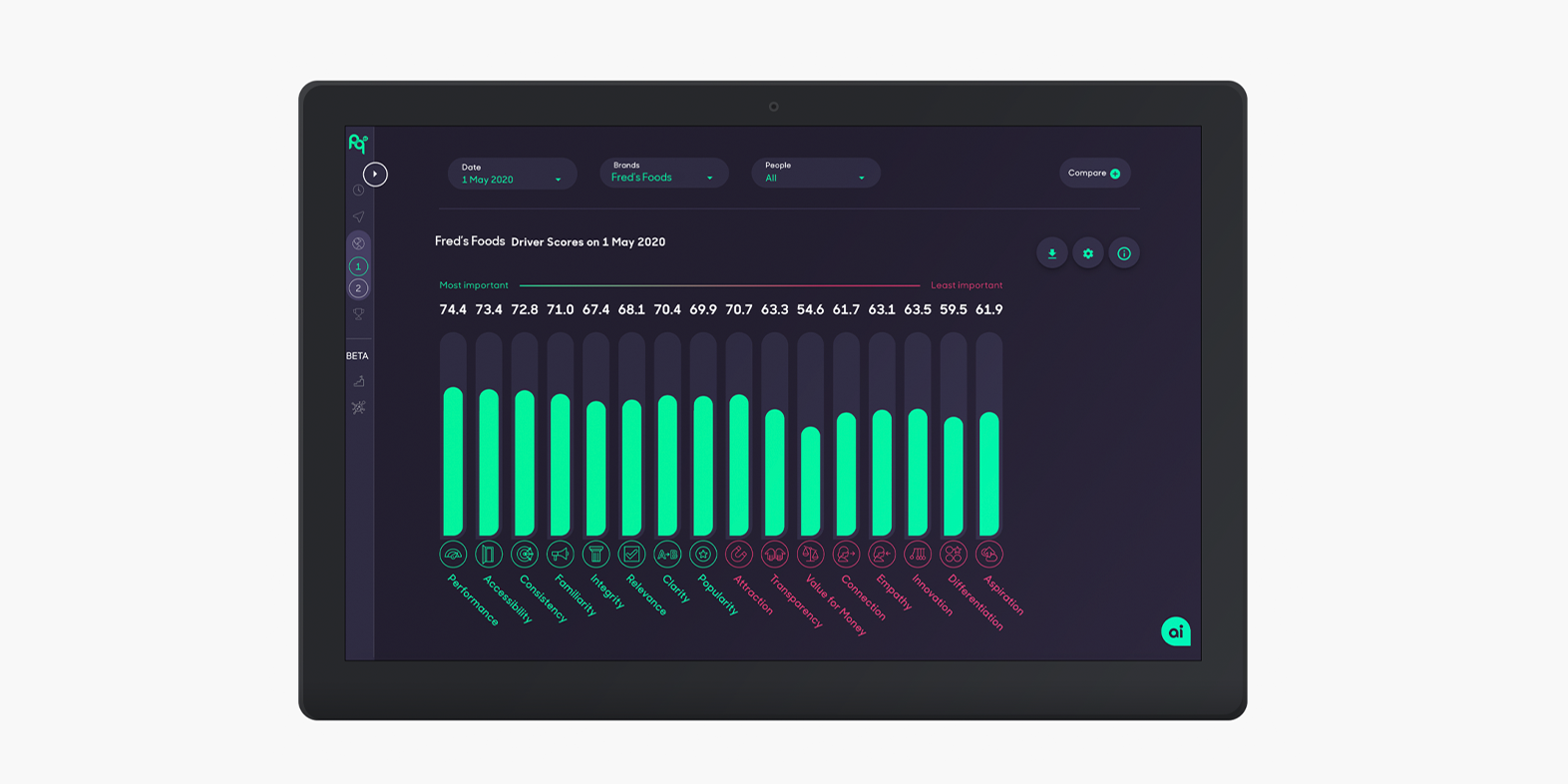
On the other end, Sarah’s Snacks is not meeting category needs. Based on what shoppers feel they need, they are weaker on these primary Drivers and could be immediately positioned as a less effective brand, less fit to compete in that buyer’s category.
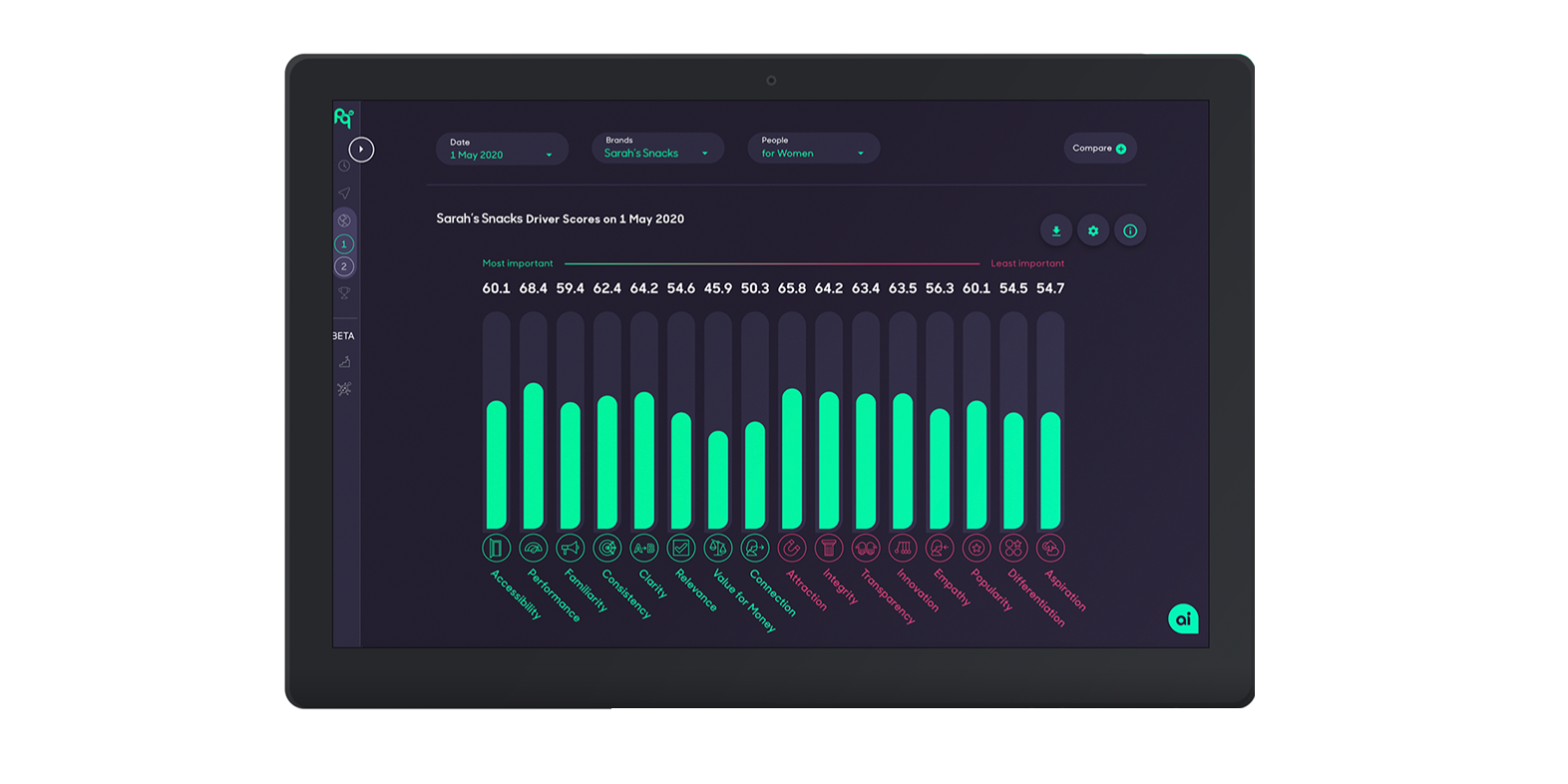
Here’s another view, where Fred’s Foods could quite easily show the strength of their brand versus their competition. Layering the brands on top of one another within the category displays this same head-to-head view in a slightly different way. Let’s add Ed’s Eats as a third brand.
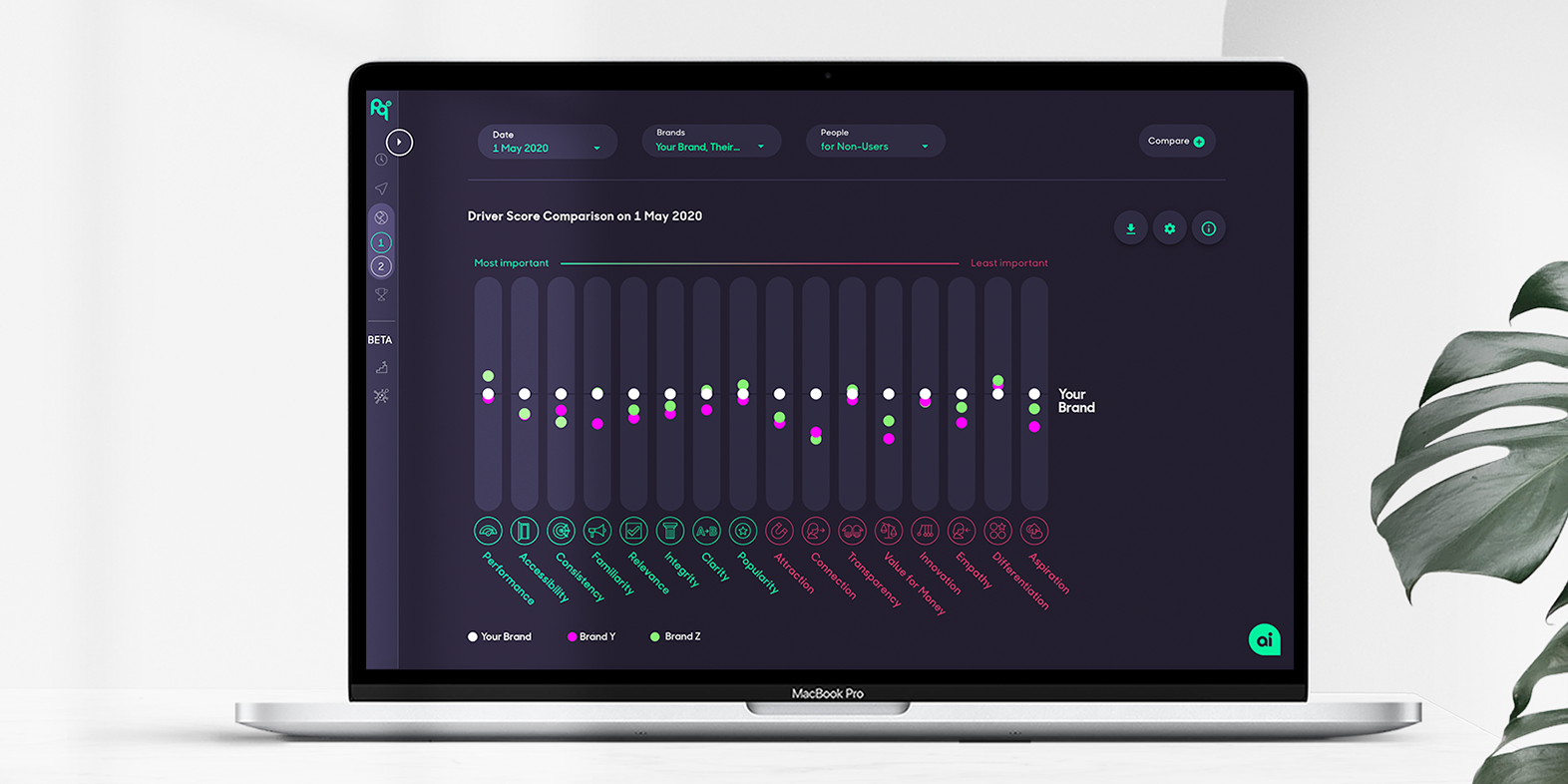
You can see that Fred’s Foods is the set of white dots across the middle of the chart with Sarah’s Snacks and Ed’s Eats indexed off it. With the ordering still set by Category Importance, it is here that a buyer can undoubtably see that Fred’s Foods is delivering better than competitors on 6 of the top 7 Drivers.
That starts to plant the seed, especially if Fred’s Foods is a challenger brand in the category. Is Fred’s Foods distributed as well as Sarah’s Snacks or Ed’s Eats? If not, they should be.
As we explained up front, the number one key performance indicator (KPI) for a buyer is to grow their category value. This is usually about:
Range rationalization is a common exercise employed by retailers, where they try to eliminate less productive SKUs in favor of ones that might be more productive. In other words, if a brand finds itself owning too many of the SKUs that fall into a retailer’s dreaded “long tail,” they can lose their spot on the shelf of that retailer.
In order to prevent this, your brand should proactively create an innovation pipeline. Having an innovation pipeline is extremely important in the event that your SKUs are deemed less productive. You’ll have a new innovation ready and waiting in the wings to swap in – and hold your share of shelf.
When presenting your trade story to a retailer, there are three angles you can take to build your narrative. Depending on your brand and your category you can choose one of them, or all of them.
They are:
1. How will your brand drive more users?
2. How will your brand drive more usage?
3. How will your brand drive more trade up?
Let’s briefly discuss each of them:
One way a buyer can grow their category is by more people (users) buying from it year on year. If the category’s penetration is not fully saturated, this can be done by ensuring that your brand will tap into an innovative, unmet category need – something that will literally catch the eyes of non-category users and urge them to purchase the category for the first time.
Alternatively, you can drive more users by persuading the buyer that your innovation will drive more shoppers within that particular retail outlet. Penetration for the category might be high, but it’s possible that shoppers who would normally purchase from the buyer’s retail store are having to go to a competitive retailer to purchase it.
Whatever the case, it is important that you break your shopper profiles down, at least by age and gender, because your category penetration will look different cross-segment. In most cases you will be able to build out a few different arguments for how your new product drives more users just by looking at sub-segment category penetration and existing shopper behaviors.
Another way to drive a buyer’s category value is by focusing on more usage. Put simply: how is your brand driving people to purchase more units than they normally would within a given year?
There are many ways to craft “more usage” stories within a category. It could be that when shoppers choose to buy your product, they tend to use it up more quickly. Or, that when they purchase your product as a complement to another product, shoppers will use both more frequently.
This story angle can even be occasion- or event-based. Examples include seasonal categories, where innovations that encourage people to purchase “off-peak” allow for more purchases per year.
Finally, another way your brand can drive a buyer’s category value is by selling your units at a higher price versus the competition. If you’re innovating into a higher price tier, or if your brand is naturally priced higher than the competition, there is incentive on the buyer’s side to sell every unit at the highest value.
Showing that your brand justifies its cost is a simple way of reassuring a buyer that your brand has strong value.
Value for Money is one of the 16 Drivers measured in the ProQuo AI platform, which makes it easy to show that your brand is worth it. Take this chart as an example, which shows the Value for Money change of Katie’s Kombucha versus competitors Jim’s Juice and Tanya’s Tea amongst Women. Katie’s Kombucha is currently sold at a higher price per unit than Jim’s Juice and Tanya’s Tea.
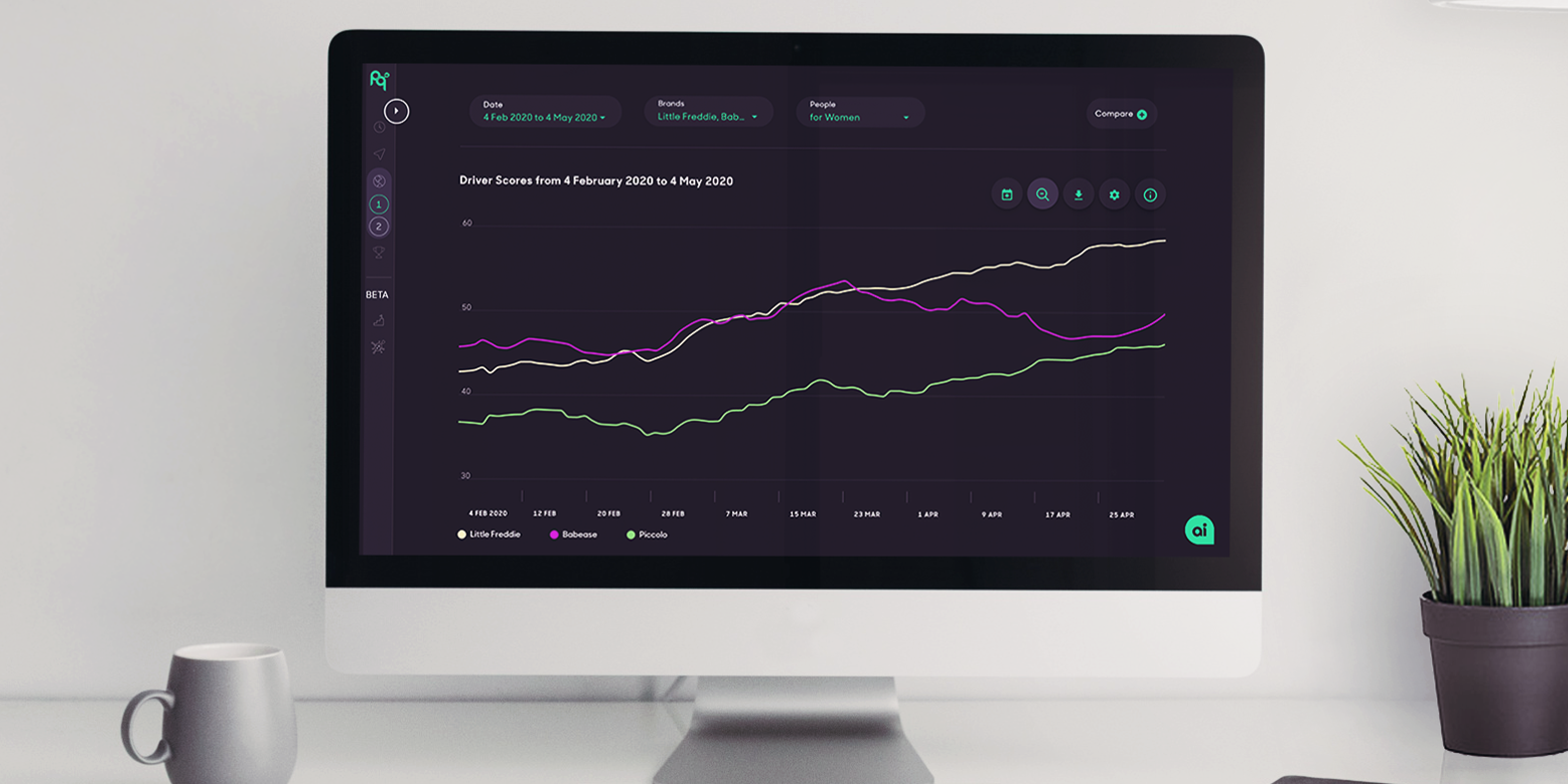
Over the last three months, Katie’s Kombucha – even when sold at a higher price – has only accelerated its Value for Money while Jim’s Juice has seen it plummet in the last 30 days.
Showcasing that shoppers are finding your brand worth it, and that it is accelerating in value at a higher than average category price per unit is a very strong argument to support your brand’s ability to trade people up within the category.
Now that you’ve positioned yourself as a category expert, proven what shoppers need from the category, and how your brand is able to deliver category value better than any brand out there, you need to start sealing the deal. It’s time to showcase the activities that will support your new innovations landing in market.
Give the buyer confidence that people will be driven into store to purchase by taking them through your brand’s innovation marketing plan. How much will you spend on the launch? What media channels will you use to support the activation? What communications will you put into market, and what have people been feeling and thinking about those communications?
Showing Proof
Showing the success of a past campaign is a good tactic. Take this campaign here, from a popular food brand looking to drive non-users (those not currently buying) into their category. During their campaign period they saw some serious growth within that segment.
These simple charts signal to a buyer that when your brand goes live with communications, it works.
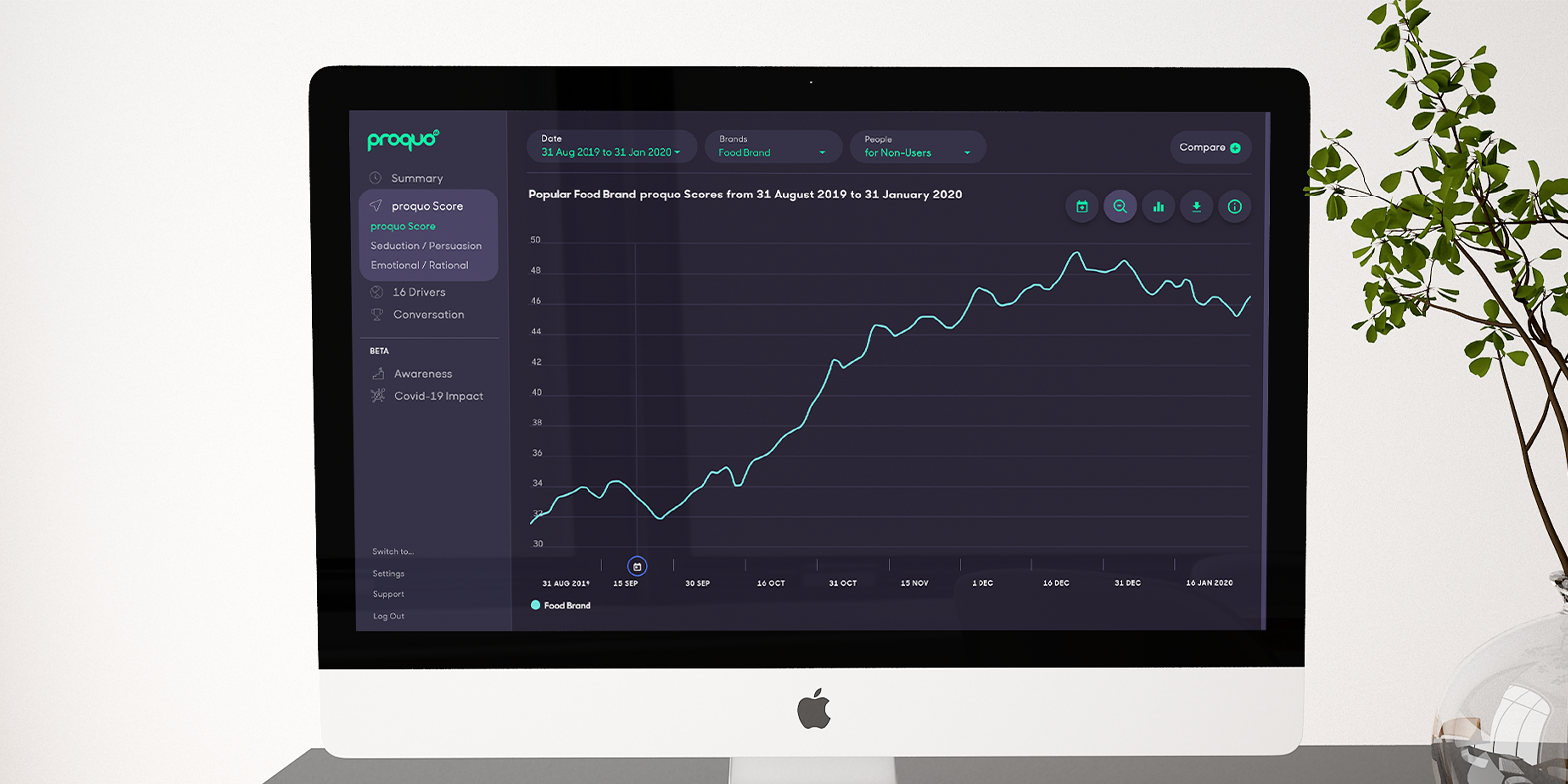
Showing a retailer the amount of advertising spend you’ll put behind your launch is important, but so is showing them the positive reaction of people who have already been exposed to your marketing efforts.
Consumer quotes are a great way to prove that your marketing spend turned heads. Here’s an example over the same campaign period of what Non-users had to say about the above-mentioned food brand. This feedback is great to instill confidence that when you market your product, you drive category value.
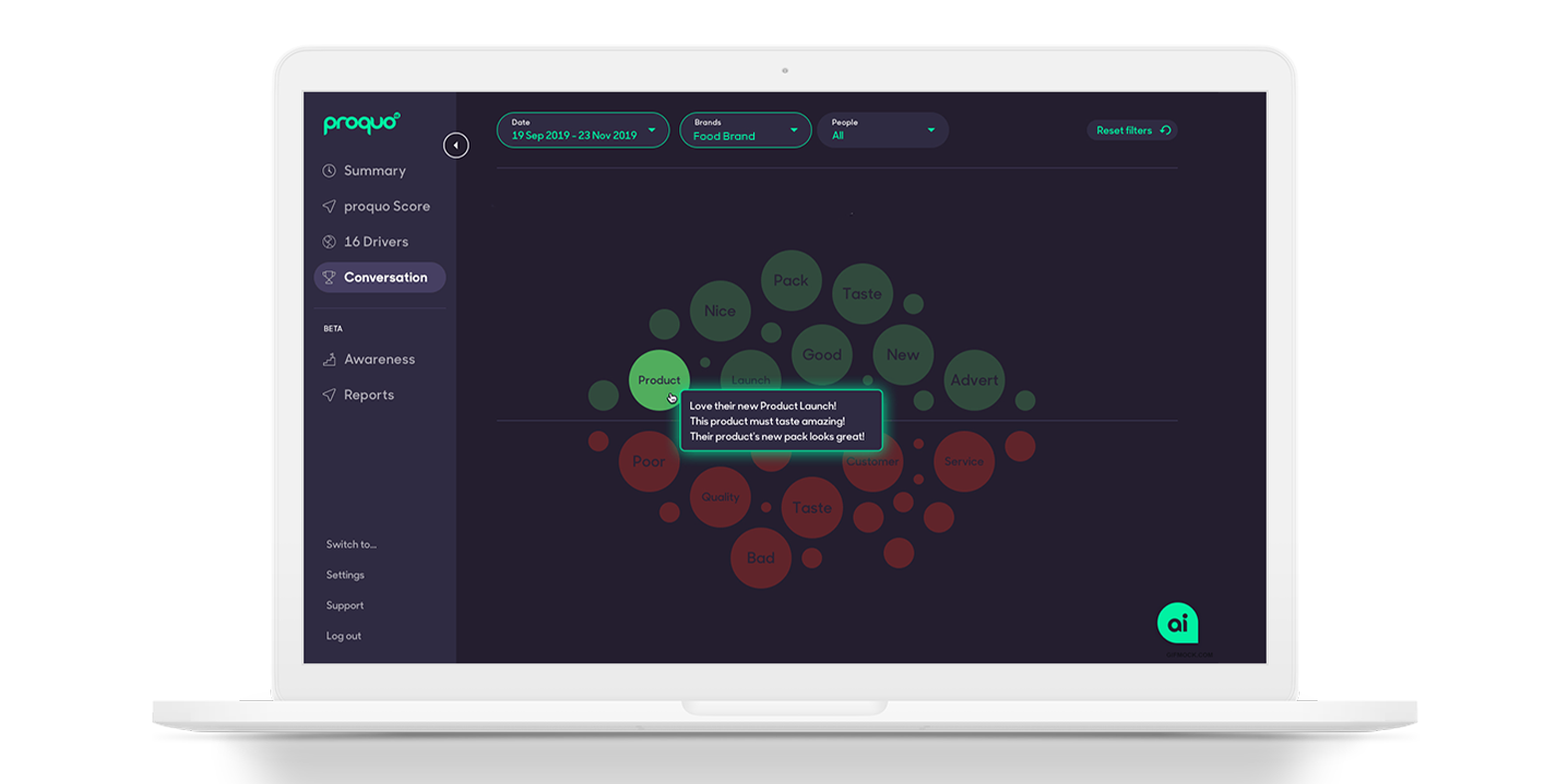
If you’re using the 16 Drivers as your guide, you can show how your brand’s 16 Drivers changed before and after you ran your campaign. You want to show how the top category drivers have gone up, and how the communication has grown some of your more deficient category drivers.
Leverage your data as a reliable way to show your brand awareness increased during a recent campaign period. This will show that when you advertise your brand it becomes more top-of-mind for category consumers and therefore more likely to purchase over a campaign period.
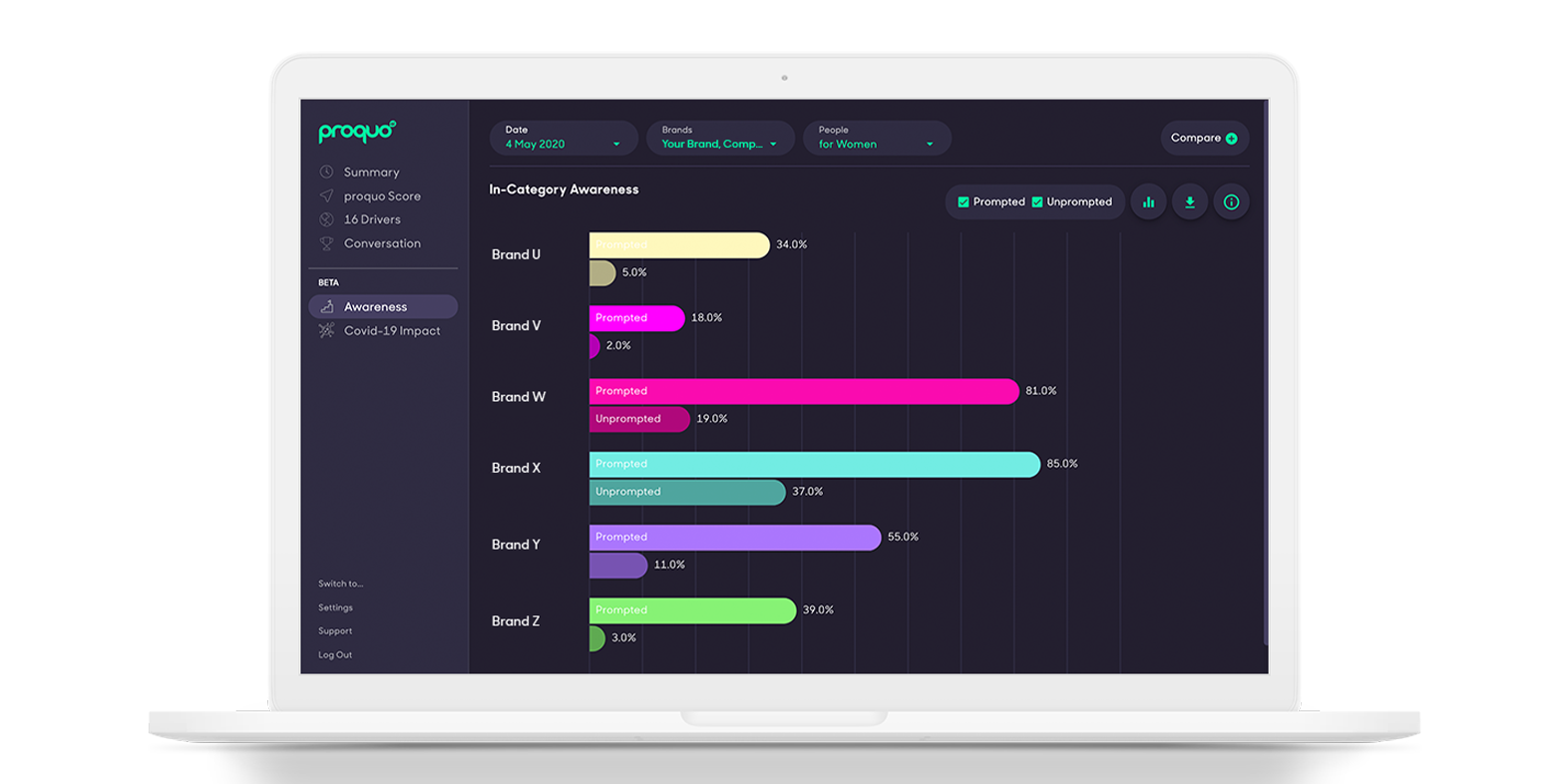
Remember It’s a Two-Way Street
Another thing to remember in instilling buyer confidence: remember that this is a relationship. It is imperative that you show support for them – how will you work with them, or give them a quid pro quo? What does your brand’s promotional spend look like? How much are you willing to fund a discount on your product without impact to the retailer’s margin? What kind of point-of-sale display units are you going to be building at the buyer’s store to catch people’s eye and draw them down into the buyer’s aisle in store? Map out what your annual promotional strategy looks like and provide the buyer with best-in-class customer service.
When challenger brands aim to grow distribution and household penetration, one tactic is to offer exclusivity. Exclusivity could take the shape of launching into only one retailer. It could be the early release of a particular product. It could even be a unique product as part of a range sold only within that retail store.
Do not shy away from making deals with buyers if you feel it will add to your overall brand’s long-term sustainable growth. Just make sure, of course, that you don’t make any promises you can’t keep, or which might lead to a stifling of your growth opportunity further down the line.
When building a trade story there are two things that are easy to employ but often forgotten.
1. Let Your Data Do The Talking
Arm yourself with some really simple, straightforward charts which clearly tell the story to the retailer. When in doubt, less is more. Make your story short and sharp. Make it fact-based, not opinion-based. Trying too hard to shape an argument or unnaturally bend a story in your favor will be obvious and send your credibility out the window. Build an honest story and make sure your delivery is equally authentic.
2. Make Your Story Retailer-Specific
Every retailer and every buyer is different. Do not build a one-size-fits-all trade story. Take the time to tailor it to the buyer. This includes both macro and micro levels: You should ensure your trade story is in line with the customer’s retail objectives, but you should also use the retailer’s most current logo and present on a co-branded template. In each trade story presentation, make a conscious effort to show the buyer that you’ve designed something designed specifically for them.
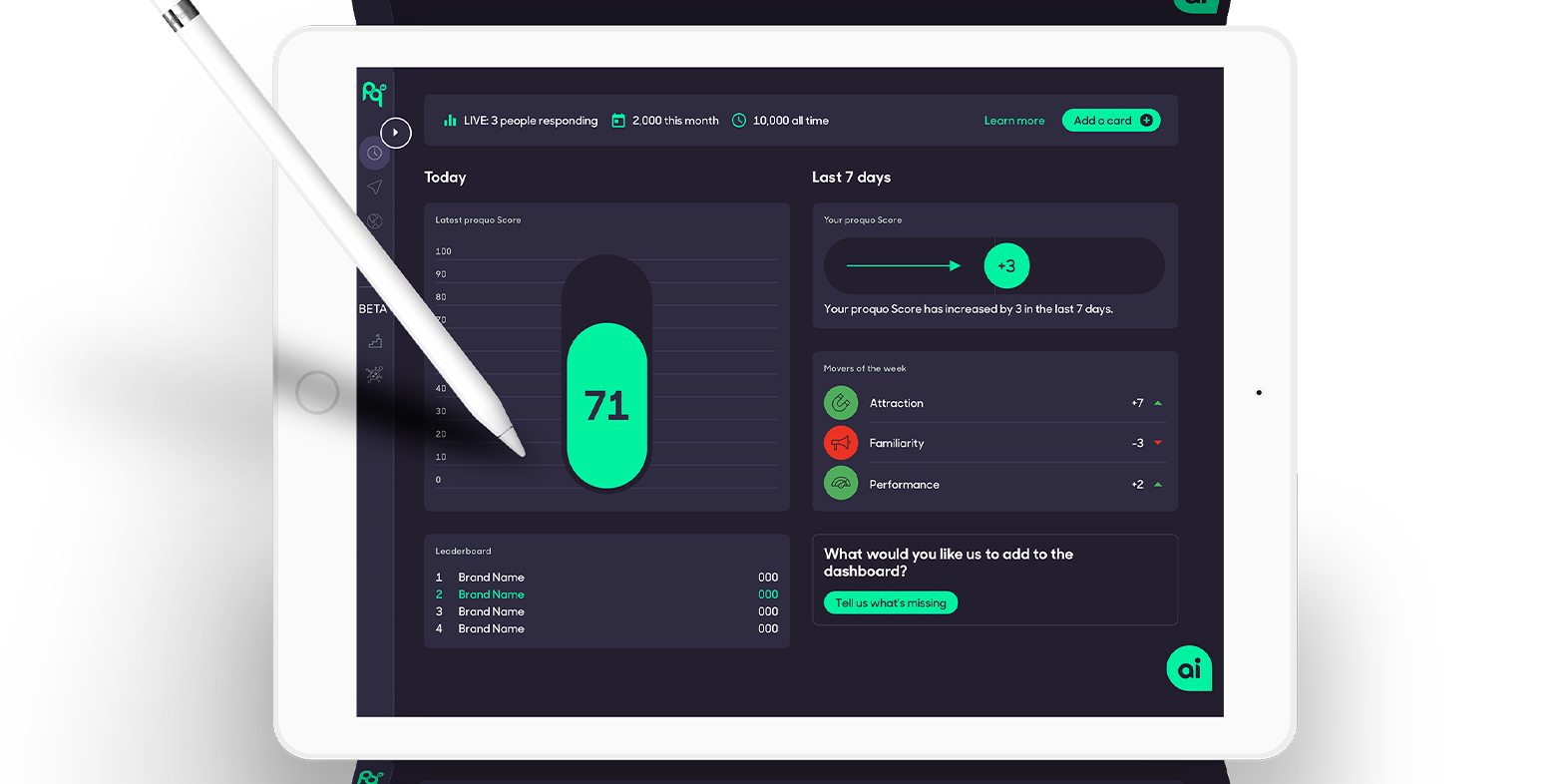
All the data within this guide, and more, is available on our Brand Management platform, ProQuo AI.
ProQuo AI is always-on, showing you what people feel and think about your category and how your brand is performing versus the competition, daily, within it.
The online platform captures the feelings and thoughts of the customers and buyers within your category to give you an immediate understanding of where your brand stands.
Our intelligent platform will take your brand further, faster.
Don’t believe us?
© 2020-2023 ProQuo AI International
All rights reservedWebsite by Blend